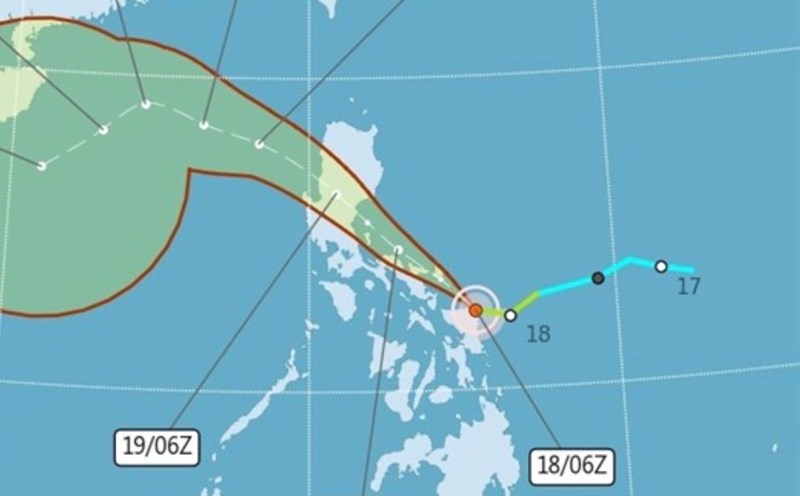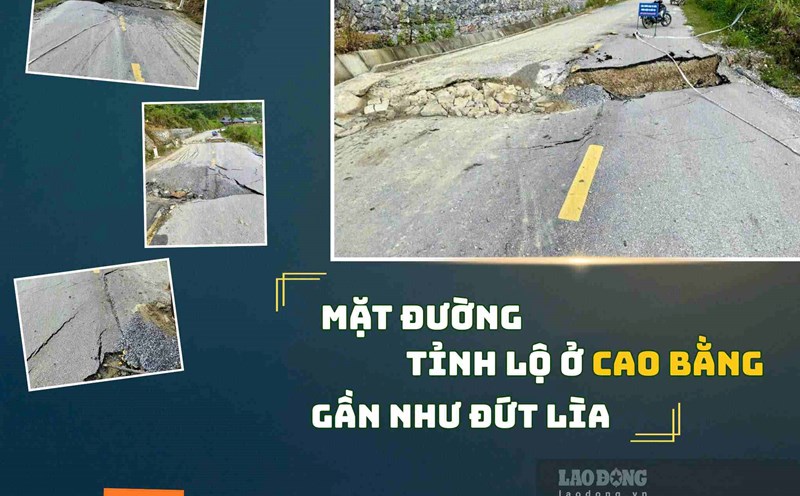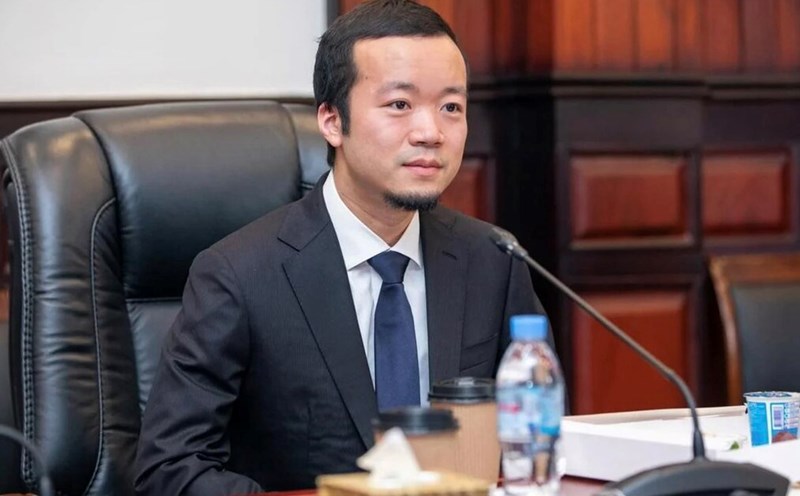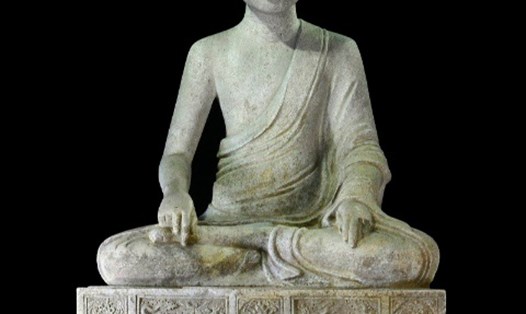Truc Lam Yen Tu Zen Territory
Ho Thien Pagoda, whose Chinese name is Tru Phong Tu, was built on the slope of Phat Son Mountain, in the Yen Tu range. Today, the pagoda is located in Phu Ninh area, Binh Khe ward, Dong Trieu city, Quang Ninh province. Located at an altitude of more than 500m above sea level, Ho Thien Pagoda is surrounded by mountains and forests on the North - East - West, and the South looks towards Ben Chau Lake, creating a "leaning on the mountain facing the water" position.
According to legend, Ho Thien Pagoda was built during the Tran Dynasty, when King Tran Nhan Tong became a monk and visited here. Ho Thien Pagoda was also the place where King Tran Nhan Tong preached to his disciples. Then, at the beginning of the 14th century, Zen master Phap Loa inherited and continued the career left by Tran Nhan Tong.
In the book “Dai Nam Nhat Thong Chi” it is written: “Ho Thien Pagoda in Phu Ninh Commune, Dong Trieu District was built during the Tran Dynasty”. In the book “Tam To Thuc Luc” and the stele “Tien Du Son De Nhat Quynh Lam Tu Bi Ky” erected at Quynh Lam Pagoda it is written that Venerable Pho Tue Minh Giac - Zen Master Phap Loa (the second patriarch of the Truc Lam Zen sect) opened Ho Thien and Bac Ma hermitages in the 4th year of Khai Thai (1327) under the reign of King Tran Minh Tong.
The most massive Buddhist architecture of the Truc Lam Zen sect
According to historical records and oral traditions, in the early 14th century, Zen master Phap Loa built many large-scale architectural works to serve the practice, teaching and living of monks on site. Through the ups and downs of history, the pagoda deteriorated and was restored many times under the dynasties from the early Le dynasty to the Nguyen dynasty.
Ho Thien Pagoda consists of two areas, the first area is about 3,000m² wide, facing south. In the first area, archaeologists have discovered extremely massive architectures with construction materials from green stone slabs and bricks and tiles with the following architectures: Front hall, incense burning area, upper hall, tower garden, ancestral house area, monk house area, hermitage area and stele house area, the architectures are determined to date from the Tran Dynasty and the Le Trung Hung Dynasty.
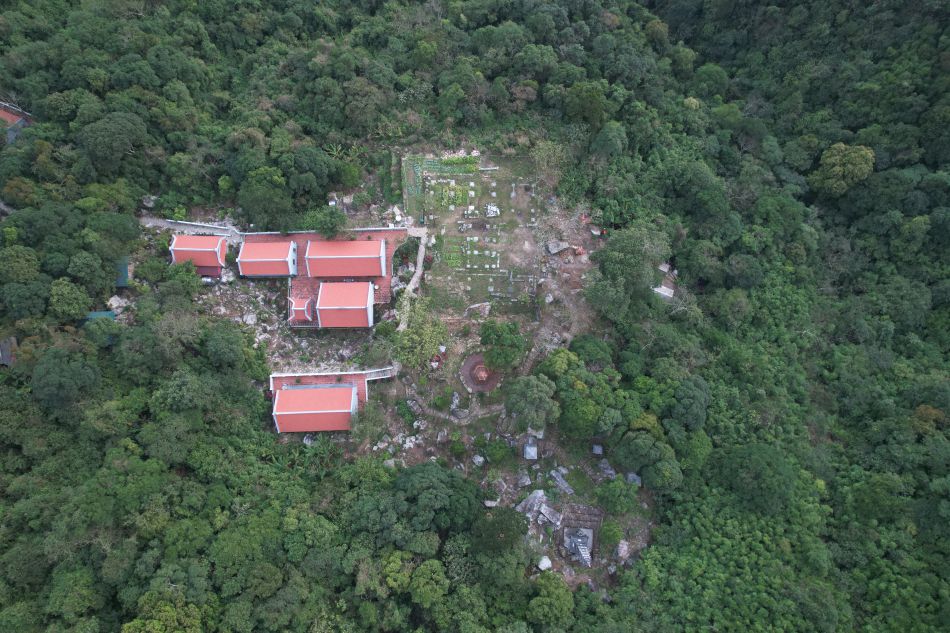
Behind the main architectural area is the tower garden including: 1 Buddha tower and 6 towers worshiping the ancestors of the pagoda. It is said that the Buddha tower originally had only 5 floors under the Tran Dynasty, later 2 more floors were built to form the 7-storey stone Buddha tower as it is today. However, the remaining traces and locations of the ancestral tower, many researchers and agencies have rebuilt it to the correct size and original patterns with new stone materials. In particular, at Ho Thien Pagoda, there is still a brick ancestral tower, dating from the Le Trung Hung period.
The second area is located about 200m to the East of the first area. In this area, there are still traces of house architecture, behind the house architecture is a stele house built in the shape of the letter "Tnh". The front hall of the stele house is built of red bricks, the back part is the area where a large stone stele named "Tru Phong Tu Bi Ky" is placed, recording the restoration of the pagoda.
Currently, Ho Thien Pagoda has been rebuilt with a spacious architectural system, fully functional such as: Tam Bao, ancestral house, monk's house, guest house and many other auxiliary works.
To this day, Ho Thien Pagoda still preserves ancient architecture hundreds of years old, from architectural structures made of many different materials. Here, scientists found dozens of stone pillars with different ages and carvings.
In particular, Ho Thien Pagoda still preserves 4 stone steles, the stone steles provide many different important information. In particular, the stele "Tru Phong Tu Bi Ky" is kept in the stele house, the stele is still intact, more than 2.7m high, the stele house and the stele are decorated with many different themes. The stele was erected in March of the 2nd year of Vinh Huu (1736) under the reign of King Le Y Tong; recording the merit of Lord Trinh who built and restored the pagoda, and at the same time praising the beauty of Ho Thien Pagoda.
Dong Trieu is home to many temples, pagodas, mausoleums and many other relics from the Tran Dynasty. Ho Thien Pagoda is a destination not to be missed by tourists and Buddhists from all over the world when they set foot in the "holy land of Truc Lam Yen Tu Zen sect". On every major holiday of Vietnamese Buddhism and the beginning of the New Year, local people and tourists from everywhere head to Ho Thien Pagoda to sightsee, enjoy the Spring and worship Buddha. To get to Ho Thien Pagoda, visitors can take many different routes: from the six-way intersection on National Highway 18 (in the direction of Hanoi - Dong Trieu), turn left onto Tran Quang Trieu Street (DT326) about 12km, then turn left onto Ngoa Van - Yen Tu Street (in the direction of Yen Tu - Ngoa Van) 6km to the parking lot, from the parking lot, continue climbing the mountain for 30 - 40 minutes to reach Ho Thien Pagoda.
With its special cultural, historical and architectural values, Ho Thien Pagoda was recognized as a National Historical and Cultural Relic by the Minister of Culture and Information on May 29, 2006. Ho Thien Pagoda is one of the relics belonging to the Tran Dynasty Relics in Dong Trieu; it is an important connection point in the Yen Tu Relics system with the relics of the Tran Dynasty tombs system.



